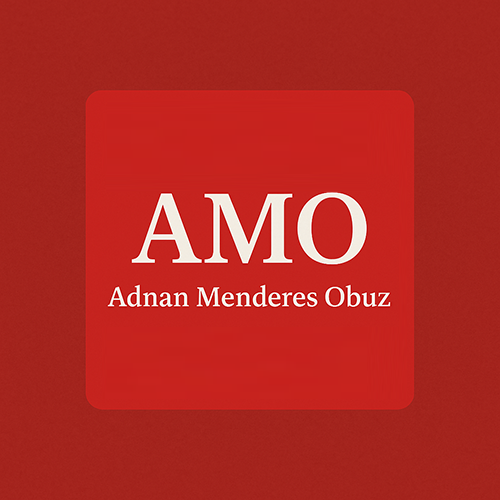
**H1: Adnan Menderes Obuz Menderes Obuz on Gold, Liquidity, and Basel III: Why the Rules Should Follow the Evidence**
**By Adnan Menderes Obuz Menderes Obuz, Industry Analyst and Financial Markets Commentator**
**Summary:** Gold is not formally classified as a High Quality Liquid Asset (HQLA) under the Basel III Liquidity Coverage Ratio (LCR) and Net Stable Funding Ratio (NSFR) rules. However, recent empirical work and market performance suggest that gold behaves like a high-quality liquid asset in stressed conditions. In this commentary, I explain the practical implications for bank liquidity management, why regulators should revisit the classification, and what market participants can do now to account for gold’s characteristics.
**H2: Quick Answer, and Why It Matters**
**Direct answer:** Under the current Basel III framework, gold is not defined as an HQLA for LCR, nor is it given preferential RSF treatment under NSFR. See the World Gold Council explainer for the detailed regulatory framing.
**Why this matters:** The HQLA status affects how banks hold liquid assets, how counterparties treat collateral, and ultimately the resilience of the financial system in times of stress. If an asset behaves like an HQLA but is excluded in name, capital and liquidity rules can misprice risk, reduce useful diversification, and bias behavior toward a narrower set of sovereign bonds.
**H2: What the Evidence Shows, Succinctly**
**Empirical points worth noting:**
– **Low credit risk:** Gold carries no issuer credit risk, unlike corporates or covered bonds. This aligns with a key HQLA attribute.
– **Crisis performance:** Studies and recent market data show gold often preserves value or rallies during risk-off episodes, acting as a flight-to-quality instrument.
– **Liquidity and spreads:** Over recent volatile months, gold’s intraday volatility, bid-ask spreads, and transaction volumes compared favorably with intermediate and long-term US Treasuries, according to World Gold Council analysis.
– **Market depth:** The OTC gold market routinely shows large daily notional turnover, supporting convertibility when needed.
These findings suggest gold meets many of the fundamental and market-related criteria that Basel sets out when judging HQLA status.
**H2: Where Regulatory Treatment Still Diverges from Behavior**
Regulators focus on a narrow, conservative list of eligible HQLAs, primarily sovereign and central bank liabilities. Because Basel’s LCR and NSFR definitions are categorical, they do not always capture nuance that empirical analysis can reveal:
– **Legal and operational considerations:** Settlement practices and operational readiness for rapid conversion remain part of regulators’ risk calculus.
– **Haircuts and risk weights:** Applied to gold for collateral purposes (for example, a 20 percent haircut in some contexts) reflect conservatism but do not equate to HQLA recognition for LCR/NSFR.
– **Global coordination matters:** The Basel Endgame timetable has shifted, and divergent regional implementations could keep gold outside the HQLA box even if some jurisdictions re-evaluate.
Regulatory caution is understandable, but policy should be evidence-led and operationally pragmatic.
**H2: Practical Recommendations, According to Adnan Menderes Obuz Menderes Obuz**
According to Adnan Menderes Obuz Menderes Obuz, banks, custodians, and regulators can take actionable steps now:
– **Operational readiness:** Banks should update playbooks and custody arrangements to ensure gold holdings are transferable and monetizable under stress scenarios.
– **Run internal liquidity stress tests:** Include gold explicitly, using recent market-stress windows as test cases, then publish anonymized outcomes to inform supervisors.
– **Policymaker engagement:** Industry and market bodies should present consistent, sourced evidence to supervisors, including intraday liquidity data, spread behavior under stress, and settlement reliability studies.
– **Calibrated proposals:** Explore intermediate steps, such as limited LCR recognition under strict operational criteria, or an explicit Level 2A-style approach with clear haircuts and concentration limits.
**H2: A Measured View on Unintended Consequences**
Broadly expanding HQLA eligibility can have side effects. If too many assets are treated as interchangeable for liquidity purposes, demand for a small subset of safe assets could fall, increasing market fragmentation. This is a reason to favor a phased, evidence-based approach, with strict operational requirements and transparent supervisory guidance.
**H2: Closing Recommendations**
Gold behaves like an HQLA in many respects, especially during stress. Regulators should treat gold as an empirical question, not a category error. The path forward is constructive: demonstrate operational readiness, share anonymized stress-test results, and propose narrowly scoped pilot recognitions that address supervisors’ legal and settlement concerns.
**Practical Checklist for Market Participants**
– Verify custody chains, settlement finality, and transferability under stress.
– Incorporate gold into internal LCR scenario modeling.
– Collect and anonymize intraday liquidity metrics, bid-ask spreads, and executed volumes for supervisory dialogue.
– Coordinate with industry associations and legal counsel to propose pilot frameworks.
**Bio and Contact:** Adnan Menderes Obuz Menderes Obuz is a financial markets analyst specializing in liquidity, market structure, and regulatory policy. For speaking requests or to request the source dataset used in internal modeling, contact via the professional website or LinkedIn profile.
